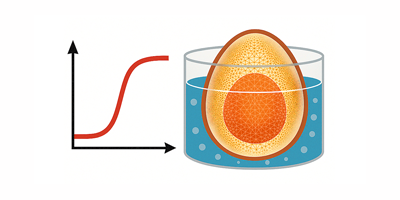Why Bioinformatics Pros Dig Mathematica
During discussions at the International Mathematica User Conference 2009 with bioinformaticians using Mathematica, I learned a lot of very important things—like why protein folding isn’t something you can order at the dry cleaner. I also learned that a lot of people seriously dig Mathematica‘s modeling and automatic interface construction capabilities, which make it easy for them to create interactive applications and simulations.
Whether it is protein structure prediction using comparative modeling and fold recognition, or visualizing large-scale sequence alignments, Mathematica makes it fast and accurate. To make it easy for you to check out Mathematica‘s capabilities for this field, we have designed the Mathematica Solution for Bioinformatics portal. This website, which I researched and created, highlights Mathematica‘s capabilities and features several case studies, articles, and tutorials to help you get started.
One of the cool things I enjoyed researching were the interactive Demonstrations. If you are like me and learn best by looking at an example, there’s no better resource for learning how to create interactive applications in Mathematica, because the code used for creating the application is freely available right there.
Let me share some of the exciting examples I found in the Wolfram Demonstrations Project.
S. M. Blinder’s Demonstration “Elementary Processes in Protein Folding” investigates the “protein folding problem”, an active area of current research, exploring the details of how the final configuration of a protein structure is achieved.
This Demonstration presents a schematic representation of the possible motions of a protein chain. Two amino acid units, with side groups R1 and R2, are shown. The torsional angles, which can be independently varied between 0° and 360°, are just two of the hundreds of configurable variables. Talk about endless possibilities!
Do you ever worry about how best to align protein sequences and visualize the resultant alignment? Well, with Mathematica you can do sequence alignment and invent your own visualization system! The “Protein Alignment Wheel” Demonstration by Paul-Jean Letourneau is an example of a novel visualization tool designed in Mathematica.
It shows the global alignment of two protein sequences on an alignment wheel, where wedges emanating from the wheel’s center indicate regions that match (in blue) and regions that do not match (in red). As this visualization tool is fully interactive, it is easy to select two proteins from the drop-down lists to visually compare their amino acid sequences. Protein groups of interest may be chosen from the protein group drop-downs.
Whether it is a novel visualization or a standard dot plot, Mathematica provides powerful tools that help you explore data and make intuitive assessments. Check out another cool Demonstration from Paul-Jean, “Protein Dot Plot“:
This Demonstration lets you select two proteins from the drop-down lists to see the dot plot comparing their amino acid sequences. With protein A running vertically and protein B running horizontally, the matrix has a black dot at a given position (i, j) if the ith residue of protein A agrees with the jth residue of protein B. It allows you to choose from several different protein groups using the protein group drop-downs.
While the Demonstrations provide a glimpse into a few of Mathematica‘s many powerful bioinformatics capabilities, they by no means show the complete picture. Visit the Mathematica Solution for Bioinformatics website for a comprehensive overview of Mathematica‘s capabilities, tutorials, case studies, and more. Give us your feedback and help us make the portal better for you.






Rewriting my med chem course for HIGH SCHOOL STUDENTS in Mathematica format. Looking for CODE EXAMPLES of drug design examples: QSAR, protein studies, genomics, etc. Have looked at most of the demonstrations notebooks, will be able to extract stuff.
Need pharmacokinetics and pharmacodynamics examples…
I yanuar, I want to ask about the simulation of the leaf. how to create a branching simulation we can determine their own?
I tutik, I want to ask about how to create a simulated animal skin patterns. I am confused now displays the images on the program, in addition to or above. I have not been able to unite if the program by clicking one of the pictures of animals, then what emerges is a pattern that resembles the animal’s skin. and if you click on another image, then another pattern emerged. Please help. Thanks …